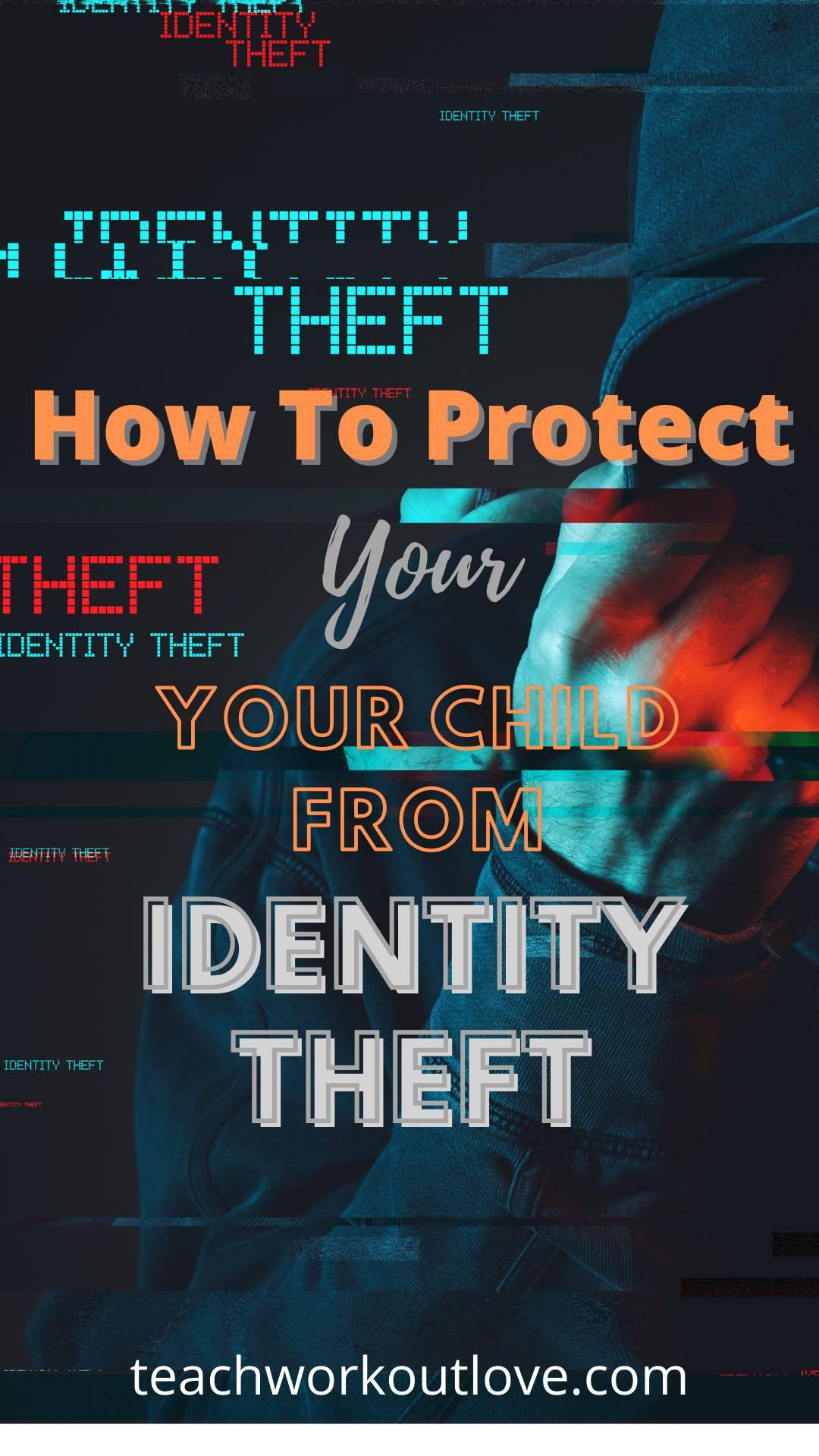
We all want to protect our children from known and unknown threats, especially now that we live in the digital age. We may believe that the dangers that adults face will not harm our children, but this is not always the case. Child identity theft is becoming more common in this ever-increasing world.
Identity theft is the unlawful access to a person’s confidential information in order to achieve financial gain. While identity theft in adults tends to be more about a loss of funds, identity theft in children can have a more insidious effect. Access to valuable information allows thieves to:
- Open bank accounts
- Rent property
- Apply for government benefits and assistance
- Apply for a loan
- Get utility services, such as gas, electricity, and water

The Statistics
Child identity theft targeted more than 1 million children under the age of 18 in 2017 alone. Of those, two-thirds were under the age of 7. This may be surprising since children are not traditionally thought of as victims of identity theft.
One of the unforeseen repercussions of the pandemic is that identity theft more than doubled in 2020 alone. It is also reported that 39% of children will fall victim to identity theft versus 19% of adults. We really are seeing a rise in child identity theft and it is worrying.
We have all had to make adjustments to our daily operations. This includes increasing our digital presence. In 2020, 71% of adults had to work from home. Because of this, hackers and online criminals had more access than ever to confidential files.

Why Are Children Targeted for Identity Theft?
You may be asking – why children? Well, the answer is quite simple. Children are a ‘blank slate’. Most children do not have credit liabilities in their name. Although children are not likely to have substantial amounts of available funds in their accounts, they do have better chances of being able to open a line of credit.
Financial fraud can occur easier because children and parents are less likely to monitor their credit reports and confidential documents. Parents rarely check to see if their child has a credit history. This is how criminals can take advantage of the child’s identity over the course of time.
Identity theft happens frequently to adults too. You, as the parent, may have had your personal information compromised. By no fault of your own, once a criminal has access to your information, they can quickly obtain access to your child’s.
How It Happens
The next question you may be asking is how does this even happen? There are multiple ways thieves can gain access to your child’s personal information. Here are the most frequent:
Physical Theft
When a child is born they receive physical versions of their social security card and birth certificate. Criminals can physically steal the child’s identity cards or social security cards. This could be by making a copy of the card or actually taking the original copy. It is important to keep a close eye on these documents and limit who has access to them.
Parental Theft
Though this is unthinkable for most, some parents or guardians may feel tempted to take advantage of their child’s untouched credit possibilities. 60% of victims of child identity theft knew their assailants. Close family members often have knowledge of pertinent information pertaining to children.
Digital Theft
This method is commonly used by criminals to attempt financial fraud. We may not even realize that our child has a digital presence. However, most of their private information can be obtained online. This can happen through online registrations, birth announcements, and messaging.
When your child’s information has been stolen, a number of things can happen. They could be denied access to government benefits,— such as student loans —, have a poor credit history, and be unable to apply for student credit cards.
Precautions and Prevention
This may all seem overwhelming and confusing. With all of this information, you may be wondering how you can protect your child. Don’t fear, there are precautionary measures we can all take to keep our children —and ourselves— safe from identity theft.
The first step is to educate your child on internet safety. This step is key as your child grows and starts to want to play online or browse the web on their own. The internet opens up a magnitude of possibilities for your child. They may see the fun and joy that comes from an online presence, but it is our responsibility to keep them safe.
Secondly, avoid oversharing or providing unnecessary information. If you need to give personal details, ask why the information is needed and how exactly it will be used. What we perceive as trivial information may be all a criminal needs to commit identity theft. Sharing the birthday of your child online can be a gateway for criminals. So can signing up for email chains.
You should also be alert if you start receiving IRS letters in your child’s name or debt collection calls. We all have a tendency to overlook and ignore these types of things as it is easy to assume that these alerts are spam or sent in error. But most times this is a sign that something is not right and child identity theft has happened.
Conclusion
The bottom line is that we must take proactive measures in assuring that our children do not fall victim to financial fraud. It can be scary not knowing who has access to your child’s precious information. Stay on top of your child’s financial safety by regularly requesting their credit reports from the major credit bureaus: Experian, Equifax, and TransUnion.
You are allowed one free credit check per year. Poor credit can follow a person for many years after the initial incidents occur. Reporting and correcting the crime can save your child future troubles when they are ready to start their financial journey.





